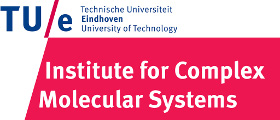Team:TU-Eindhoven/FNRPromotor
From 2013.igem.org
(Difference between revisions)
Pascalaldo (Talk | contribs) (→FNR Promotor) |
Pascalaldo (Talk | contribs) |
||
| Line 3: | Line 3: | ||
=FNR Promotor= | =FNR Promotor= | ||
| - | {{:Team:TU-Eindhoven/Template:Lead}}To let the bacteria sense low oxygen concentrations, a FNR promotor was used in this research. The promotor that was chosen is not a default one, since it is a so called tandem promotor. That is, it contains two FNR binding sites. The kinetics of this promotor are therefore different than the promotor previously described in the [[Team:TU-Eindhoven/StochasticModel Decoy Sites model]]. Here the necessary adaptations of the Decoy Model to account for this special promotor will be described.{{:Team:TU-Eindhoven/Template:LeadEnd}} | + | {{:Team:TU-Eindhoven/Template:Lead}}To let the bacteria sense low oxygen concentrations, a FNR promotor was used in this research. The promotor that was chosen is not a default one, since it is a so called tandem promotor. That is, it contains two FNR binding sites. The kinetics of this promotor are therefore different than the promotor previously described in the [[Team:TU-Eindhoven/StochasticModel | Decoy Sites model]]. Here the necessary adaptations of the Decoy Model to account for this special promotor will be described.{{:Team:TU-Eindhoven/Template:LeadEnd}} |
==References== | ==References== | ||
Revision as of 15:06, 8 September 2013



FNR Promotor
To let the bacteria sense low oxygen concentrations, a FNR promotor was used in this research. The promotor that was chosen is not a default one, since it is a so called tandem promotor. That is, it contains two FNR binding sites. The kinetics of this promotor are therefore different than the promotor previously described in the Decoy Sites model. Here the necessary adaptations of the Decoy Model to account for this special promotor will be described.
References
 "
"



